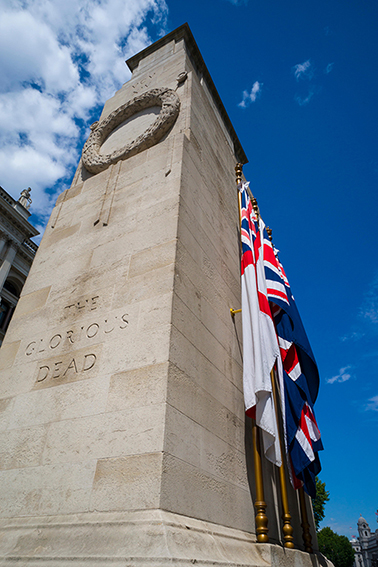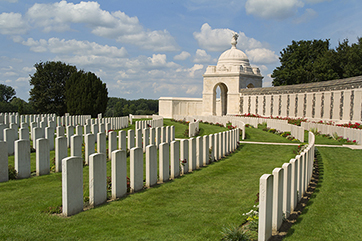1 Historiography
The boom in cultural history during the 1990s led to various studies discussing the remembrance and ‘cultural memory’ of the First World War. One of the most influential was Jay Winter’s Sites of Memory, Sites of Mourning: The Great War in European Cultural History (1995).
Through focusing on memorialisation, artistic responses and mourning practices in Britain, France and Germany during the immediate aftermath of the war, Winter argued that the Great War did not necessarily lead to a break with the past in terms of how people chose to remember and commemorate the dead. Rather, in many cases, people turned to traditional, consoling forms of commemoration, rather than experimental or modernist representations.
The popular memory of the First World War in Britain has also attracted the attention of numerous historians, including military historians keen to counter various ‘myths’ of the conflict. For example, Brian Bond in The Unquiet Western Front: Britain’s Role in Literature and History (2002) and Gary Sheffield in Forgotten Victory: The First World War: Myths and Realities (2001) have argued that popular representations of the war in Britain tend to portray the conflict misleadingly as a futile tragedy, with an undue emphasis on ‘incompetent’ generals, disillusioned war poets and pointless suffering. Instead, they stress that the war was a necessary conflict for Britain during which skilled generals led the nation to an important military victory.
In the run-up to the centenary of the First World War, historians revisited this issue. Niall Ferguson, for example, argued that the First World War was a futile war for Britain and that it should have stayed out of the conflict, whereas others, such as Max Hastings, stressed that Britain had fought in a ‘necessary war’ with no option other than to intervene. Both Ferguson and Hastings expressed their views in a number of outlets, including this article for the Radio Times [Tip: hold Ctrl and click a link to open it in a new tab. (Hide tip)] .
Dan Todman in The Great War: Myth and Memory (2005) has examined the development of various ‘myths’ about the war in Britain. Todman explains that a range of views existed about the conflict during the interwar years: whereas some poems and war memoirs tended to depict the war as tragic and futile, many Britons, including veterans, still viewed the war as a patriotic triumph during this period. Since the 1960s, however, a ‘mythology’ or simplified story of the war has begun to dominate British perceptions: patriotic interpretations gave way to narratives centred on the horror, futility and tragedy of the war.
The accuracy of these ‘myths’ of the war, and the extent to which they still dominate British understandings of the conflict, are still debated. Nevertheless, when introducing students to the commemoration and representation of the First World War, it’s worth asking them to consider whether their sources reinforce or challenge this mythology. Do they portray the war as a pointless disaster or as a heroic victory? Or do they convey more complex or ambiguous messages about the war?
Although many students are perhaps most familiar with canonical war poetry – which tends to reinforce this ‘mythology’ of the war – it’s also worth noting that many war memorials and popular literary works from during and shortly after the conflict promoted a more patriotic, heroic interpretation of the conflict.
The next section examines how war poetry can be interpreted as a primary source by historians.


